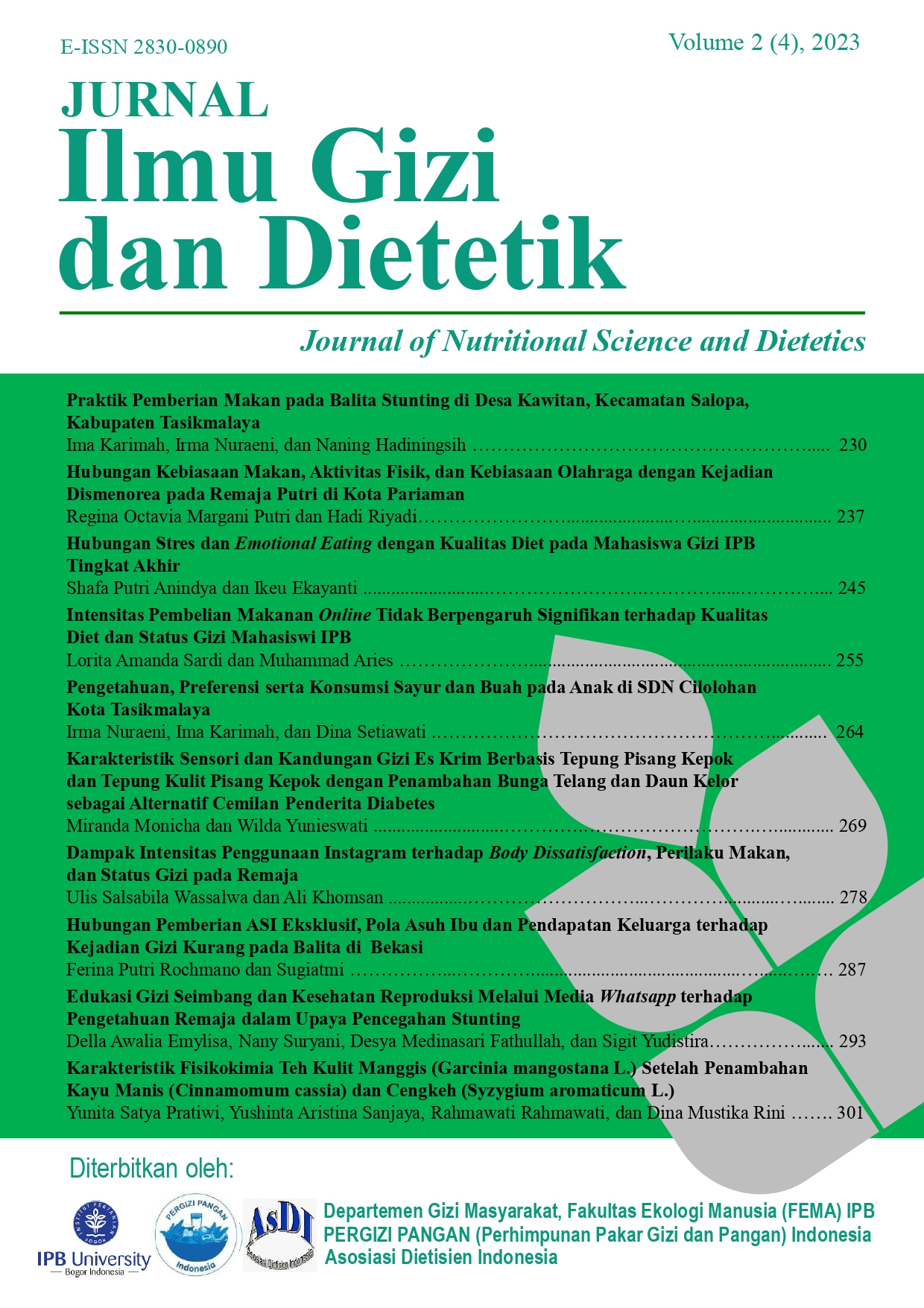Praktik Pemberian Makan pada Balita Stunting di Desa Kawitan, Kecamatan Salopa, Kabupaten Tasikmalaya
Abstract
Stunting was still national problem in Indonesia.The prevalence of stunting in Indonesia was currently 21.6%. The stunting prevalence target in 2024 is 14%. Therefore, decrease of 3.8% per year is needed to achieve this target. One of the factors cause stunting is inappropriate food intake. Intake energy, protein, calcium, iron, and zinc can increase te risk of stunting. There are several areas in West Java wich are the prevalence of stunting was increased. Kawitan village is one of the stunting that has high prevalence in Tasikmalaya Regency. The prevalence of stunting in Kawitan Village is 42.7%. Therefore, researchers are interested to study how the complementary feeding practice in stunting toddlers in Kawitan Village. The aim of this research was qualitative with Focus Group Discussion (FGD). The population in this study were mothers of toddlers who had stunted children in Kawitan Village, Salopa District, Tasikmalaya Regency. The number of informants was 10 mothers. The result of this study showed that the frequency of eating in stunted toddlers in this study varied from 1-4 times a day. The food given at one meal was not diverse. The portion given was also not according to the daily recommendation. Almost all children under five consume snack that are not nutrient dense more often than main meals.


